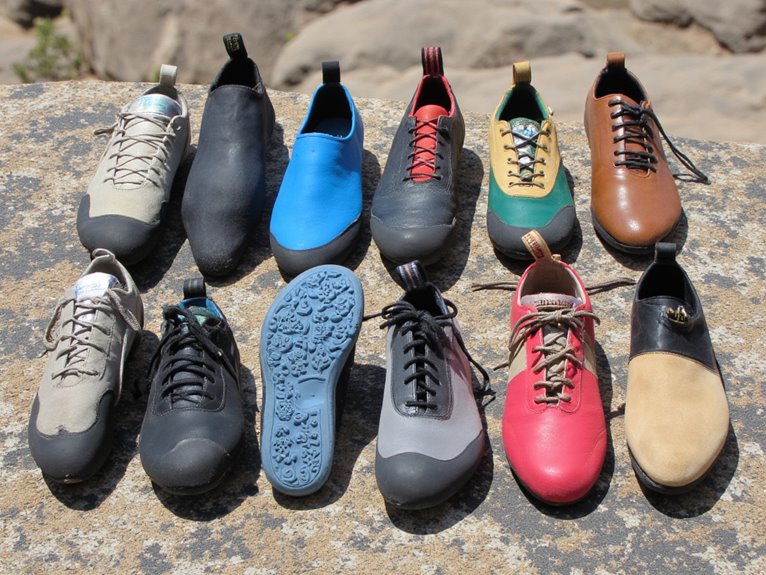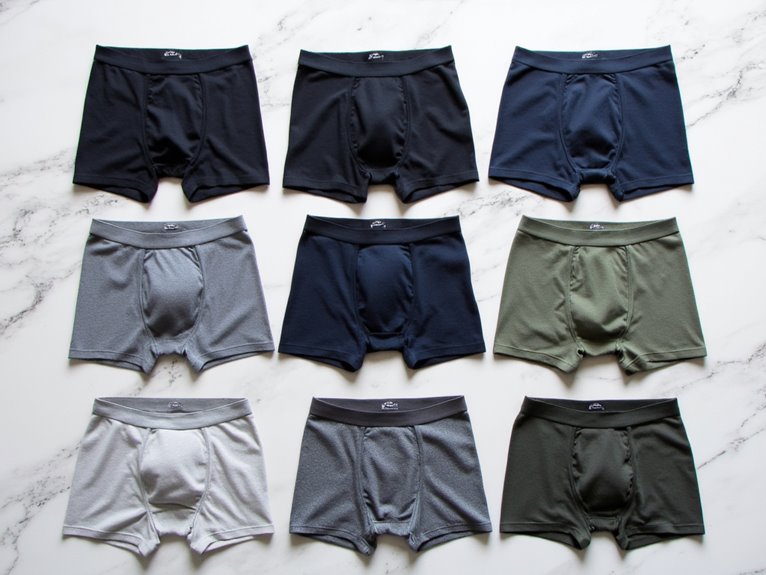How Long Can I Be Out in Windchill?
The duration of safe exposure to windchill depends on the interplay of air temperature, wind speed, and humidity, with even brief periods posing substantial frostbite risk at extremely low temperatures. Windchill charts categorize frostbite risk into five levels, with exposure times varying depending on windchill temperature. In light windchill, 1-2 hours of exposure is generally safe, while moderate windchill calls for 30 minutes to 1 hour of exposure, and extreme windchill limits exposure to 15-30 minutes. Individual factors, such as physical activity level and overall health, also affect safe exposure times. Understanding the complex factors involved is vital for safe outdoor planning.
We are supported by our audience. When you purchase through links on our site, we may earn an affiliate commission, at no extra cost for you. Learn more. Last update on 24th December 2025 / Images from Amazon Product Advertising API.
Understanding Windchill Calculations
Understanding Windchill Calculations
Windchill calculations involve a complex interplay of factors, including air temperature, wind speed, and humidity, which are carefully weighted to produce a single, misery-predicting number.
This calculation is vital in determining the duration of safe exposure to cold weather.
The windchill index, also known as the windchill equivalent temperature, is a more accurate indicator of cold stress than air temperature alone.
By incorporating wind speed and humidity, the windchill calculation provides a more thorough assessment of the cold environment.
A lower windchill value indicates a greater risk of cold-related injuries, such as frostbite and hypothermia.
Accurate windchill calculations are essential for individuals planning to spend time outdoors in cold weather, enabling them to take necessary precautions and minimize health risks.
Factors Affecting Windchill Exposure
When evaluating windchill exposure, several key factors come into play.
The air temperature, for instance, has a significant impact on the severity of windchill, with colder temperatures exacerbating its effects.
Additionally, wind speed and the type of clothing worn also play critical roles in determining the extent of exposure.
Air Temperature Matters
Air temperature plays a critical role in determining windchill exposure, as every 1°C (1.8°F) drop in air temperature can increase the windchill effect by 1-2 km/h (0.6-1.2 mph).
This is because cold air is denser and can transfer heat more efficiently, making the windchill effect more pronounced.
Three key points are essential:
- Colder temperatures amplify windchill: As the air temperature drops, the windchill effect increases exponentially, making it vital to dress warmly and take regular breaks in extreme cold.
- Temperature fluctuations matter: Small changes in air temperature can notably impact windchill exposure, so it's important to monitor temperature changes when venturing outdoors.
- Dress accordingly: Wear clothing that provides adequate insulation and protection from the wind to minimize the windchill effect and stay safe in cold weather.
Wind Speed Impacts Exposure
Wind speed is a critical factor in windchill exposure, as even moderate increases in wind speed can substantially intensify the windchill effect, making it a vital consideration for those venturing outdoors in cold weather.
As wind speed rises, the rate of heat loss from the skin increases, leading to a greater windchill effect.
For example, a 10 mph wind can make the air feel 10-15°F colder than the actual air temperature. A 20 mph wind can make it feel an additional 10-15°F colder still.
Understanding the impact of wind speed on windchill exposure is essential for accurately evaluating the risks associated with cold weather.
Clothing Affects Protection
Clothing plays a vital role in protecting individuals from windchill exposure, as the type and quality of clothing worn can notably impact the rate of heat loss from the skin. The right clothing can significantly reduce heat loss, while inadequate clothing can accelerate it.
Three key clothing factors to consider are:
- Moisture-wicking fabrics: Help to keep the skin dry, reducing heat loss.
- Insulating layers: Traps warm air, reducing convective heat loss.
- Wind-resistant outerwear: Blocks wind, reducing convective heat loss.
Windchill Chart and Guidelines
When evaluating windchill exposure, it is crucial to understand the corresponding danger zones, frostbite risk levels, and exposure time limits.
The windchill chart provides a visual representation of these critical factors, enabling individuals to make informed decisions about their safety in harsh weather conditions.
Windchill Danger Zones
Exposure to extreme cold temperatures can lead to frostbite and hypothermia, making it essential to understand the windchill danger zones. To avoid these life-threatening conditions, it's imperative to recognize the warning signs and take necessary precautions.
Windchill temperatures can be categorized into the following danger zones:
- High Risk: Windchill temperatures below -27°C (-17°F), where frostbite can occur in under 10 minutes.
- Moderate Risk: Windchill temperatures between -22°C (-8°F) and -27°C (-17°F), where frostbite can occur in 10-30 minutes.
- Low Risk: Windchill temperatures above -22°C (-8°F), where the risk of frostbite is minimal, but still requires caution.
Understanding these windchill danger zones is essential to enjoying winter activities safely and responsibly.
Frostbite Risk Levels
To further assess the risk of frostbite, it is necessary to understand the frostbite risk levels, which are determined by the windchill temperature and the duration of exposure.
The National Weather Service's windchill chart categorizes frostbite risk into five levels: low, moderate, high, very high, and extremely high.
These levels are based on the likelihood of frostbite occurring within a certain time frame.
For example, at a windchill temperature of -20°F (-29°C), the risk level is high, and frostbite can occur within 30 minutes.
Understanding these risk levels is vital in planning outdoor activities and taking necessary precautions to prevent frostbite.
Exposure Time Limits
According to the National Weather Service's windchill chart, the duration of safe outdoor exposure varies substantially depending on the windchill temperature, with even brief periods of exposure posing substantial frostbite risk at extremely low temperatures.
To guarantee safety, it's essential to understand the exposure time limits.
- 30 minutes to 1 hour: Maximum exposure time for windchill temperatures between -20°F and -30°F (-29°C to -34°C).
- 15 to 30 minutes: Maximum exposure time for windchill temperatures between -30°F and -40°F (-34°C to -40°C).
- Less than 15 minutes: Maximum exposure time for windchill temperatures below -40°F (-40°C).
To safeguard against frostbite, it's crucial to recognize the exposure time limits.
Hypothermia Risk and Symptoms
Hypothermia can develop rapidly in windchill temperatures below -20°C (-4°F), especially in individuals who are not adequately dressed for the conditions.
Prolonged exposure to cold temperatures can cause the body's core temperature to drop, leading to hypothermia.
Symptoms of hypothermia include shivering, confusion, drowsiness, and loss of coordination.
As hypothermia progresses, symptoms can worsen, leading to unconsciousness and even death.
You must recognize the early signs of hypothermia and take prompt action to warm the individual.
If you suspect someone has hypothermia, move them to a warm location, remove wet clothing, and provide warm drinks.
Seek medical attention immediately if symptoms persist or worsen.
Frostbite Prevention and Treatment
While hypothermia poses a significant threat in extreme cold, frostbite is another potentially debilitating consequence of prolonged exposure to windchill, requiring prompt prevention and treatment to prevent irreversible tissue damage.
Frostbite occurs when skin and underlying tissues freeze, causing permanent damage if not treated promptly.
To prevent frostbite, proactive measures must be taken.
Wear protective clothing: Cover extremities, including hands, feet, and face, with insulated, waterproof gear.
Stay dry: Avoid moisture, as it accelerates heat loss and increases frostbite risk.
Monitor for signs: Watch for numbness, pale or grayish skin, and difficulty moving affected areas, and seek medical attention if symptoms persist.
Early recognition and treatment are critical in preventing long-term damage from frostbite.
Dressing for Windchill Protection
When venturing into windchill-prone environments, a well-planned wardrobe is essential to maintaining body heat and preventing cold-related injuries.
Dressing in layers is essential, as it allows for adjustable insulation and moisture management.
Start with a moisture-wicking base layer, followed by a breathable insulating mid-layer, and finish with a wind-resistant outer layer.
Verify all garments fit snugly to prevent cold air penetration.
Consider a face mask, goggles, and insulated gloves to protect exposed skin.
A warm, close-fitting hat is also imperative, as significant heat loss occurs through the head.
Safe Exposure Times in Windchill
Proper attire is only half the battle, as the duration of exposure to windchill also plays a critical role in preventing cold-related injuries. Even with proper clothing, prolonged exposure to windchill can still lead to hypothermia and frostbite.
- Light windchill (10-20 mph): 1-2 hours of exposure is generally safe, but this can vary depending on individual factors such as physical activity level and overall health.
- Moderate windchill (20-30 mph): 30 minutes to 1 hour of exposure is recommended before taking a warm-up break.
- Extreme windchill (above 30 mph): Limit exposure to 15-30 minutes before seeking shelter and warming up.
Emergency Response and Prevention
In the event of cold-related emergencies, swift and decisive action is essential to prevent further harm and promote effective treatment.
Recognizing the signs of hypothermia and frostbite is critical. Watch for symptoms such as shivering, confusion, and numbness.
If you suspect hypothermia, call emergency services immediately. Remove wet clothing, and provide warm, dry blankets.
For frostbite, gently warm the affected area with warm water, but avoid direct heat. In both cases, avoid rubbing or massaging the affected area, as this can cause further damage.
Prevention is key; dress in layers, stay dry, and limit exposure to extreme cold. Stay informed about weather conditions and take regular breaks in warm, dry environments.





